The conversation from these audiences offers a valuable window into the topics of conversation and context behind it.
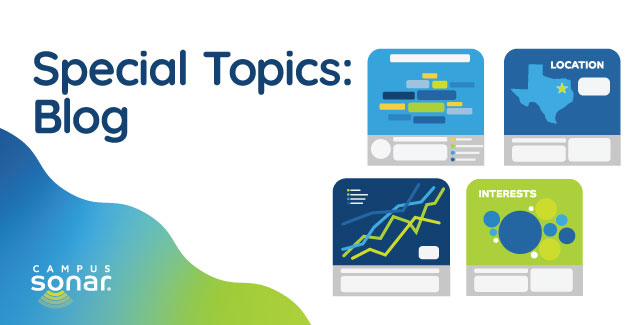
In our Higher Education’s 2020 Transition to Online Learning: April 2021 special topics report, we looked at the abrupt transition to online learning and the reactions from students, parents, and faculty—three key audiences.
- Students—participants and learners in higher education.
- Parents—key decision makers for many students, and have significant influence over where and when their children attend college.
- Official campus accounts and university faculty—an informative angle to the transition to online learning.
Looking at the online learning conversation, it’s worth asking if students were treated with empathy in the middle of a once-in-a-lifetime, worldwide pandemic. Many instructors failed to adjust attendance and participation policies that were difficult to follow as students experienced extenuating circumstances. Other campuses required test monitoring software resulting in additional stress and burden on students.
John Warner, a national voice on issues like higher education institutional values and with 20 years of college teaching experience, questioned whether it simply made sense to just ask students what they need to do their best work—and try to provide those conditions for them.
Some instructors seemed very motivated to answer this question last year, creating and engaging with online communities of instructors to share best practices, ideas, and tips for effectively teaching online. And instructors weren’t the only ones finding community and support online—so were students. Both groups sought advice on how to adapt in their respective roles through the transition to online learning.
On the other hand, parents focused primarily on how they could best support their children to succeed as they transitioned to online learning. Parents were also more likely to echo the same concerns as students about the cost of education newly transitioned to online.
Audience 1: Students
The audience most significantly impacted by the transition to online learning was current students, who had the highest proportion of negative mentions among all audiences. But when compared to the sentiment breakdown for conversation themes such as mental health and life changes, the overall sentiment for current students appeared more positive than one would expect.
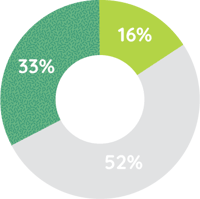
- 16% were positive
- 33% were negative
- 52% were neutral
Students primarily discussed their transition to online learning on social media with the rest of student mentions arising on forums.
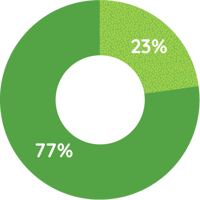
- 77% on social media
- 23% on forums
For current students, the top conversation themes by volume were classes, COVID-19, and mental health. That said, students were greatly affected in all seven themes we analyzed in the report. Academic expectations shifted as a result of the transition to online learning, not necessarily in a good or bad way, but in a way that forced students to adapt.
- One student’s grades suffered as a result of attendance and participation policies that may not have been as difficult in person.
- Other students weren’t learning effectively during online lectures and resorted to teaching themselves the material on their own time.
Aside from the lectures, students felt other aspects of the college academic experience didn’t translate well to online learning.
- Group projects proved even more frustrating for connecting with team members and coordinating work.
- Test taking and exams introduced new areas of stress as some professors implemented test monitoring software to deter cheating.
But things weren’t all bad for students during the transition.
- Communities of online students on Reddit sought to help peers adapt to the change and seek refuge and support when needed.
- Students made the most of the situation through humor, claiming the name Zoom University to refer to their collective online learning community.
- And some students made the most of the transition in their own ways.
Audience 2: Parents
Most of the parent conversation came from social media sources—95.1%—while 4.9% came from online forums. The degree of positive conversation was greater than that of other conversation topics or audiences.
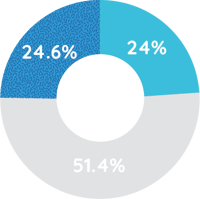
- 24% were positive
- 24.6% were negative
- 51.4% were neutral
This is the greatest proportion of positive mentions of any topic or audience segment. Some key phrases associated with positive parental mentions included themes of hard work and pride in their children, recognizing both the difficulty and adaptability students faced with this transition. Parents certainly recognized and discussed the challenges their children faced, but also provided praise and demonstrated pride.
Parents of college students who transitioned to online learning experienced some of the same challenges as their children, and had to make the same tough decisions. Some of these challenges included determining appropriate levels of parental support during a non-traditional semester, and supporting new freshmen who struggled with online classes.
One unforeseen effect for some parents was welcoming their college-aged children back home temporarily. This mother was proud to overhear her daughter participating in college courses at home, whereas other parents weren’t as thrilled with the extended spring break. Some parents questioned the value of an online education, wondering if it was even worth sending their child to a virtual campus. Others, like this father, believed that his college kids were learning valuable intangible lessons and skills that would be helpful in the future.
Audience 3: Campus and Faculty
Campus and faculty conversation related to online learning had the greatest degree of neutral mentions out of any topic or audience segment.
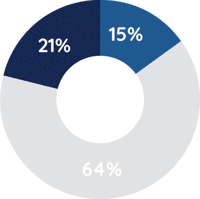
- 15% were positive
- 21% were negative
- 64% were neutral
This breakdown isn’t surprising, based on the neutral and informative nature of faculty members’ roles in the conversation. Similar to student conversations, mentions from campus and faculty social media accounts primarily occurred on social media.
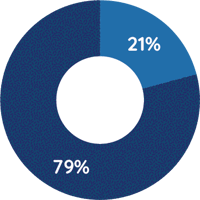
- 79% on social media
- 21% on forums
For campus social media accounts and faculty using their personal social accounts, topics of conversation were most commonly about academics and the pandemic itself. The role of campus social media accounts in particular was primarily informative, to bridge the information gap during an uncertain year. Some professors used their individual social media accounts to inform classes of schedules and reading assignments. And although it was less common for college faculty to participate in student-run forums, it happened occasionally and was a valuable new perspective in a traditionally peer-to-peer environment.
Individual social media accounts run by college professors and faculty introduced a nuanced range of opinions and approaches toward online learning. Some college professors actively sought out the advice and guidance of others to improve their own virtual instruction. Professors of all backgrounds offered insight into customizing an online course to the needs and interests of their students.
Some faculty members reflected on new technical factors they implemented, such as timestamped attendance reports generated by Google Meet. Some of these features aided in student accessibility and ease of understanding during online classes, such as screen recording and annotation. And with any learning environment that relies on technology, errors such as a Zoom outage could fully delay a professor’s lesson.
Questions to Consider
- When you think about how your campus responded to the challenges posed by COVID-19, how did your various audiences react online? How did your campus response influence that conversation?
- If your students expressed frustration with the nature of online learning, what steps were—or could be—taken to ease some of the difficulties or provide clarity when there was confusion? Are there insights to carry forward even as things return to normal?
- Both parents and students found bright spots in the midst of the disruption. Consider how you can continue to nurture the sense of community and feelings of pride many expressed during this time.
- Faculty are frequently overlooked in official communications plans, but they provide support and information to their students throughout the semester. Are there ways to incorporate faculty more fully into communications planning, like providing talking points and key messages?
